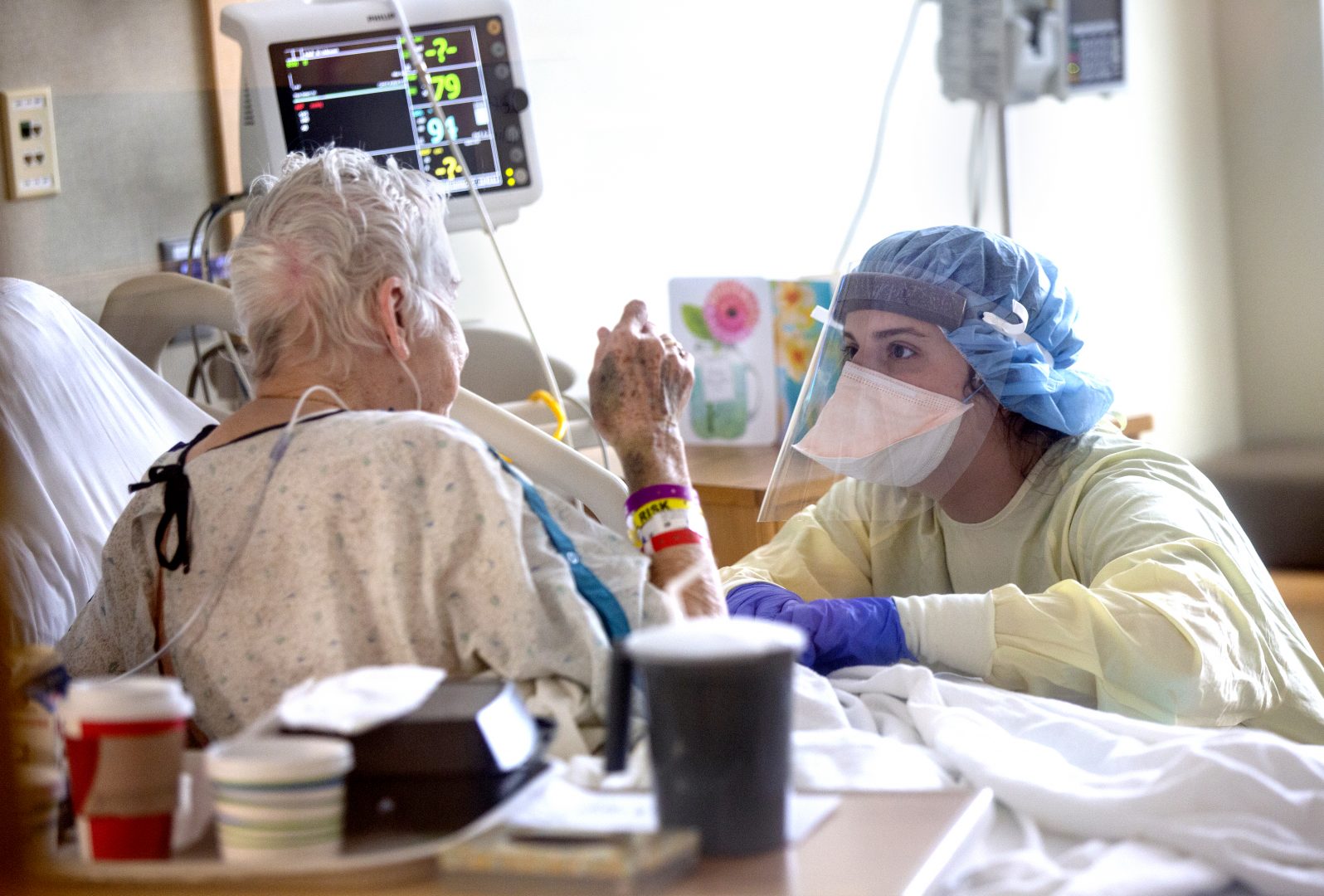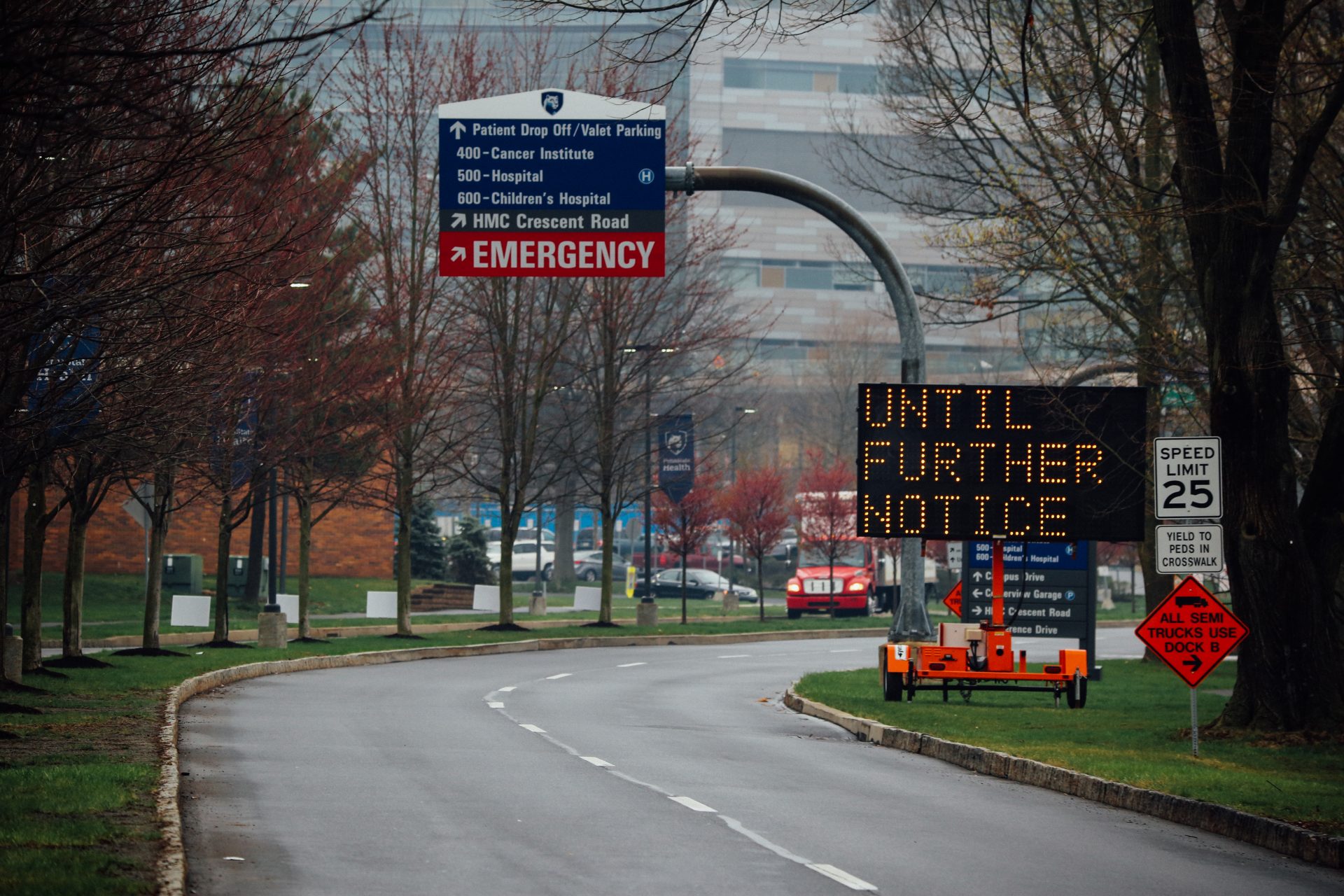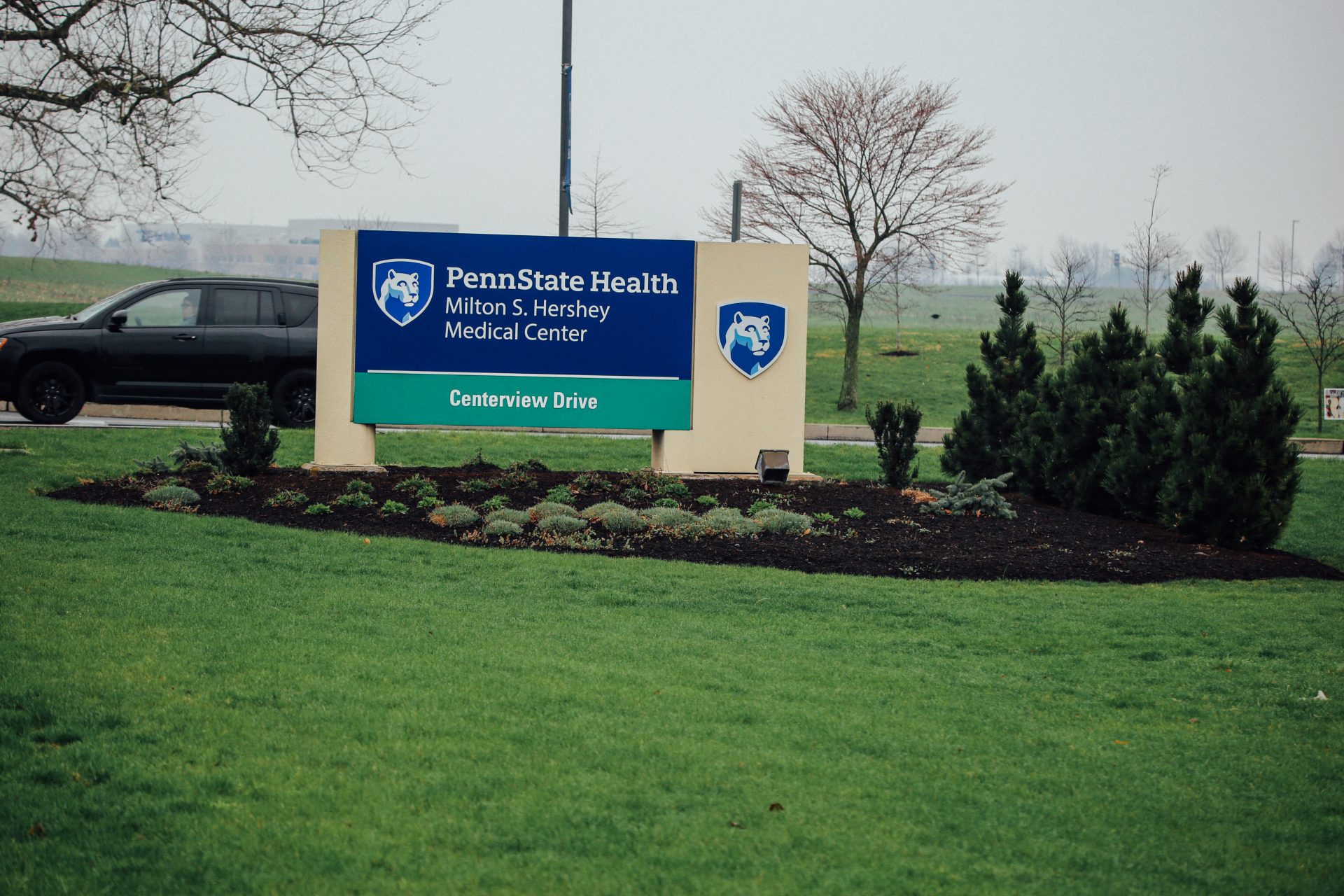
Abigail Adelsberger, a clinical nursing associate with Penn State Health St. Joseph, tends to a COVID-19 positive patient in the One South unit on Wednesday, April 8, 2020.

Abigail Adelsberger, a clinical nursing associate with Penn State Health St. Joseph, tends to a COVID-19 positive patient in the One South unit on Wednesday, April 8, 2020.

Abigail Adelsberger, a clinical nursing associate with Penn State Health St. Joseph, tends to a COVID-19 positive patient in the One South unit on Wednesday, April 8, 2020.
What you should know
» Coronavirus facts & FAQ
» Day-by-day look at coronavirus disease cases in Pa.
» What the governor’s stay-at-home order means
(Hershey) — Some members of the Special Pathogens Team at Milton S. Hershey Medical Center have undergone five years of training and preparation in the event of an outbreak like the novel coronavirus.
Three of the team members who participated in a webinar on Tuesday said the only area not practiced in-depth was the emotional component. During the webinar, they explained what it’s like to be working on the frontlines fighting COVID-19. Despite sacrificing their own lives, each of them said they are happy to take care of people.
“It’s been tough,” said Dr. Fahad Khalid, chief of division of hospital medicine at Hershey Medical Center. “We all went into healthcare because we care about taking care of people.”
The pandemic’s intensity has caused a mix of emotions, from feelings of exhaustion to feelings of extreme satisfaction, he said. Two patients have died from COVID-19 at the center, and 76 patients have been discharged to date.
“We were not overrun,” Khalid said. “I think we owe a debt of gratitude to the community for social distancing. We were able to take care of patients without being overburdened.”

Tim Lambert / WITF
Penn State Health’s Milton S. Hershey Medical Center is seen on April 1, 2020.
Another large part of patient recovery is the preparedness plan that Hershey had been practicing.
Kimberly Pierre, coordinator of highly infectious disease preparedness at Hershey Medical Center, said she started keeping a keen eye on the supply chain in January. She said she wanted to ensure the center was fully equipped.
Since everyone was going to be pulling from the same resources, Pierre said she proactively made sure there was enough personal protective equipment — gloves, safety glasses and shoes, earplugs, respirators — to alcohol swabs before coronavirus hit central Pennsylvania in March.
“We haven’t reached a point of being unsafe,” Pierre said.
The standard for disinfecting is at its highest, and the bar for working together as a team has been raised, she said. Handwashing is frequent.
“In a short time, we’ve learned what we can do better,” Pierre said. “If we have to deal with another pandemic, we’re stocking certain supplies.”
Additionally, she said available space in the hospital is being maximized and training continues for any new volunteers.
There could be another wave of the coronavirus this fall, Khalid said. That’s when he said he expects to find out how well Pennsylvania did with managing the outbreak.
“There could be a sharp increase in the fall,” he said. “We have those discussions on a daily basis.”
Once a patient is in recovery, generally the fever fades first, followed by the cough and then oxygen levels improve, Khalid said. When discharged, some patients have to continue the use of oxygen at home; others are required to have physical therapy at home or some have to go to a rehabilitation facility.
To get to that point, the Special Pathogens team has spent countless hours supporting one another —sharing knowledge from each person’s respective area of expertise — and the patient, said Martha Jansen, a registered nurse at Hershey Medical Center.

Tim Lambert / WITF
A car passes behind the entrance sign at Penn State Health’s Milton S. Hershey Medical Center on April 1, 2020.
“Administration has asked us, ‘What do you want to do?’” she said. “We’ve been able to change our policies based on how this virus has been impacting us. We’ve become well-versed in special pathogens. We have all grown in that, working toward developing a cure plan that works well.”
Evidence-based practices are being used, Jansen said. And when something isn’t working, then the staff makes slight tweaks in order to protect as many people as possible.
When the threat of contracting the coronavirus increased, Hershey Medical Center changed its visitation policy, which stopped allowing visitors. Staff also began limiting spending time in patients’ rooms.
Watching a patient’s condition rapidly deteriorate is the hardest part, Jansen said, especially when the staff knows their family cannot be nearby.
“We have patients who are away from their families and we can’t do visitors,” she said. “There’s a sadness they can’t get in touch with their loved ones.”
“Emotional support” is something the nursing staff cares deeply about, Jansen said. Their only hope is to get a patient “home as soon as they can.” Patient interaction is strongly anchored in trying to keep them calm to understand what’s going on.
“Patients ask questions like ‘what are all these wires?’” she explained. “’What is this equipment’? ‘What is this medicine you’re giving me?’ We have to teach them about breathing exercises.”
Medical staff and volunteers are also learning, specifically how to put on and take off their safety gear, and why that matters. Seven weeks into the pandemic, the Special Pathogens Team said the cooperation among staff has gelled.
“I’m pretty fortunate to be apart of that,” Jansen said. “We work together to make sure people are safe.”
In spite of all the hardship that coronavirus has caused, the Special Pathogens team said the journey so far has really been “a celebration of family.” And, when a person survives, there are unstoppable tears of joy watching someone depart after being admitted for 30 to 35 days.
“We’ve been lucky,” said Khalid. “We were able to provide exceptional care. It’s all that hard work.”
PennLive and The Patriot-News are partners with PA Post.
The days of journalism’s one-way street of simply producing stories for the public have long been over. Now, it’s time to find better ways to interact with you and ensure we meet your high standards of what a credible media organization should be.